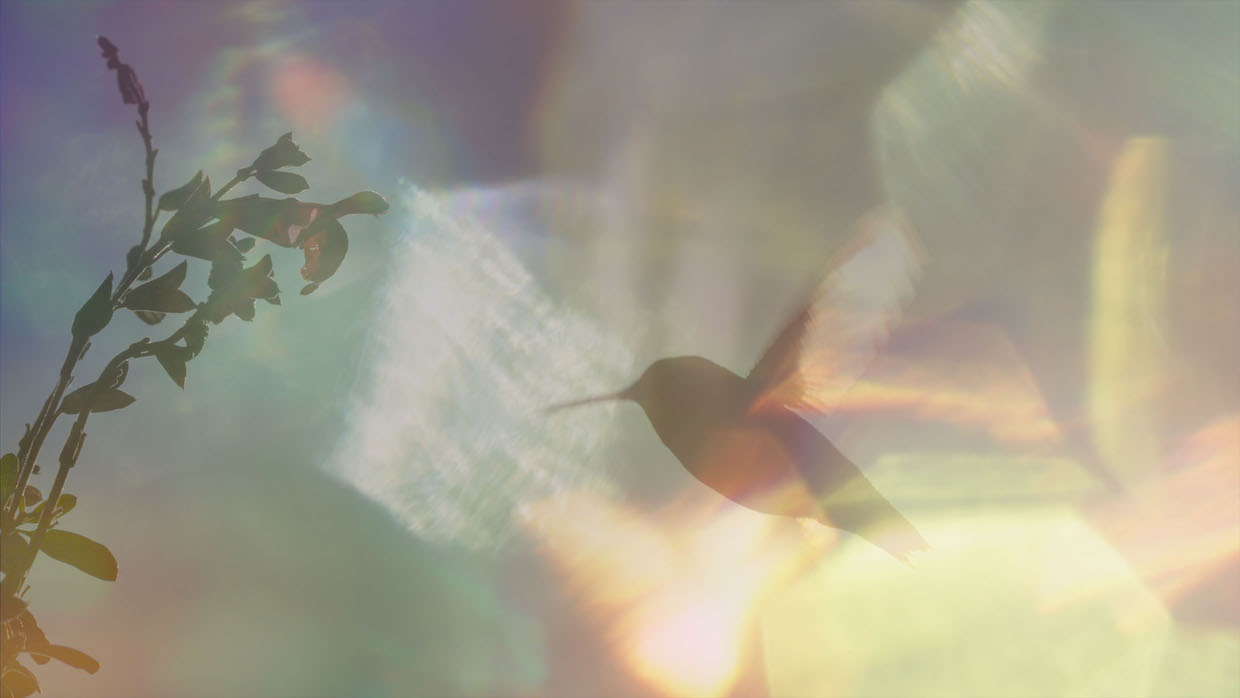 Back to selection
Back to selection
“An Opportunity To Show Another Story of Los Angeles” | Sally Aitken, EVERY LITTLE THING
 EVERY LITTLE THING, courtesy of Sundance Institute
EVERY LITTLE THING, courtesy of Sundance Institute Films are made of and from places: the locations they are filmed in, the settings they are meant to evoke, the geographies where they are imagined and worked on. What place tells its own story about your film, whether a particularly challenging location that required production ingenuity or a map reference that inspired you personally, politically, or creatively?
EVERY LITTLE THING is set in Los Angeles, California, and tells the story of a woman who rescues injured hummingbirds amid the glamour of Hollywood. As she tends her fragile charges the film transforms into a visually magical tale of love, and amid trauma we see the humanity and resilience that’s possible for all of us in tiny acts of greatness.
By tracking the spring/summer rescue season it quickly becomes clear all is not as it first seems—and our film’s location—this mythologized, famous city of Angels plays a huge role in this sweet mystery.
You name it, Chinatown, Mulholland Drive, LA Confidential, La La Land, Sunset Boulevard, Blade Runner, The Big Lebowski and more all have uniquely depicted Los Angeles and contributed to its legend in the popular imagination, and yet none of these films capture the same twinkly skyline in the same way that a birds’ eye view of the city does. So here was an opportunity to show another story of Los Angeles.
This is a layered film, it’s an observational documentary, and a stylized visual poem. In our film, we are both immersed in the familiar images of Los Angeles, and, at the same time, we go to an otherworldly space. We enter the realm of the hummingbirds, where we bear witness to the miracle of healing and the beguiling essence of these jewel-like winged messengers, who are native to the Americas. The film delicately unravels why our heroine—and we—are drawn to these birds, who become heroic characters with all the drama and uncertainty of their re-wilding set against one of the most urbanized cities in the world.
As a director I gravitate to stories that take something people think they know and ask them to think again. I was born on the other side of the Pacific Ocean, in Aotearoa, New Zealand where the most famous birds we have are flightless and our highways are single lane! But hummingbirds (and highways) are ubiquitous in California, and perhaps because I have outsider eyes, I was entranced. I thought maybe this is a strategic advantage seeing one of the most storied cities like Los Angeles in a whole new way. I could offer another cinematic take on this extraordinary world we live in, using a city people think they know, with a creature that is right in people’s backyards and delve into grand themes through the tiniest of heroes, the smallest birds in the world.
The immensity and diversity of Los Angeles inspired my filmic approach. I was captivated by the possibilities of juxtaposing this petite bird against the sprawl of a metropolis. I wanted to play with the idea of the film as a fable. And so, I elected a returnable stylistic grammar showing the city as if from a bird in flight with drone footage over the boulevards and pools, and all its inhabitants as a subtle nod to the bird’s eye view—literally—as well as the movie magic objectivity of seeing a city below us, unaware of the higher perceptions of its winged envoys who migrate into and out of the municipality every year.
But it was this very sprawl which also presented logistical challenges. Our heroine, Terry, runs a mobile hotline where callers can relay the incidents that befall the hummingbirds but due to the distance, we had no way of capturing this in real time. So instead, we played with vistas of Los Angeles, those famed letters of Hollywoodland with the ending long gone, and the audio of the hotline. In this way, the landscape and the audible trauma becomes a motif, and the constant hummingbird, shot in ultra-high speed becomes mesmerizing and strange, evoking an all-seeing, all-knowing cast of thousands.
Hummingbird lives, just like ours, have rhythms. I was keen to play one against the other, leaning into the differences and hinting at the other sensory qualities other sentient creatures possess that we don’t.
The widescreen graphic power of sprawling, urbanized, artificial, man-made storied landscape shots of Los Angeles set against the macro world of the hummingbird give this film its power. The climactic final visual word of the film goes to the verdant hills of Benedict Canyon where the resilient hummingbirds, those that have made it through, take to the skies, restored, resilient, and warrior-like.
This hummingbird story is a human story, replete with the themes of hope, compassion and an empathetic, kinder world made visible by seeing this city, and its hypnotic, hovering, annual visitors, anew.
See all responses to our annual Sundance Question here.
